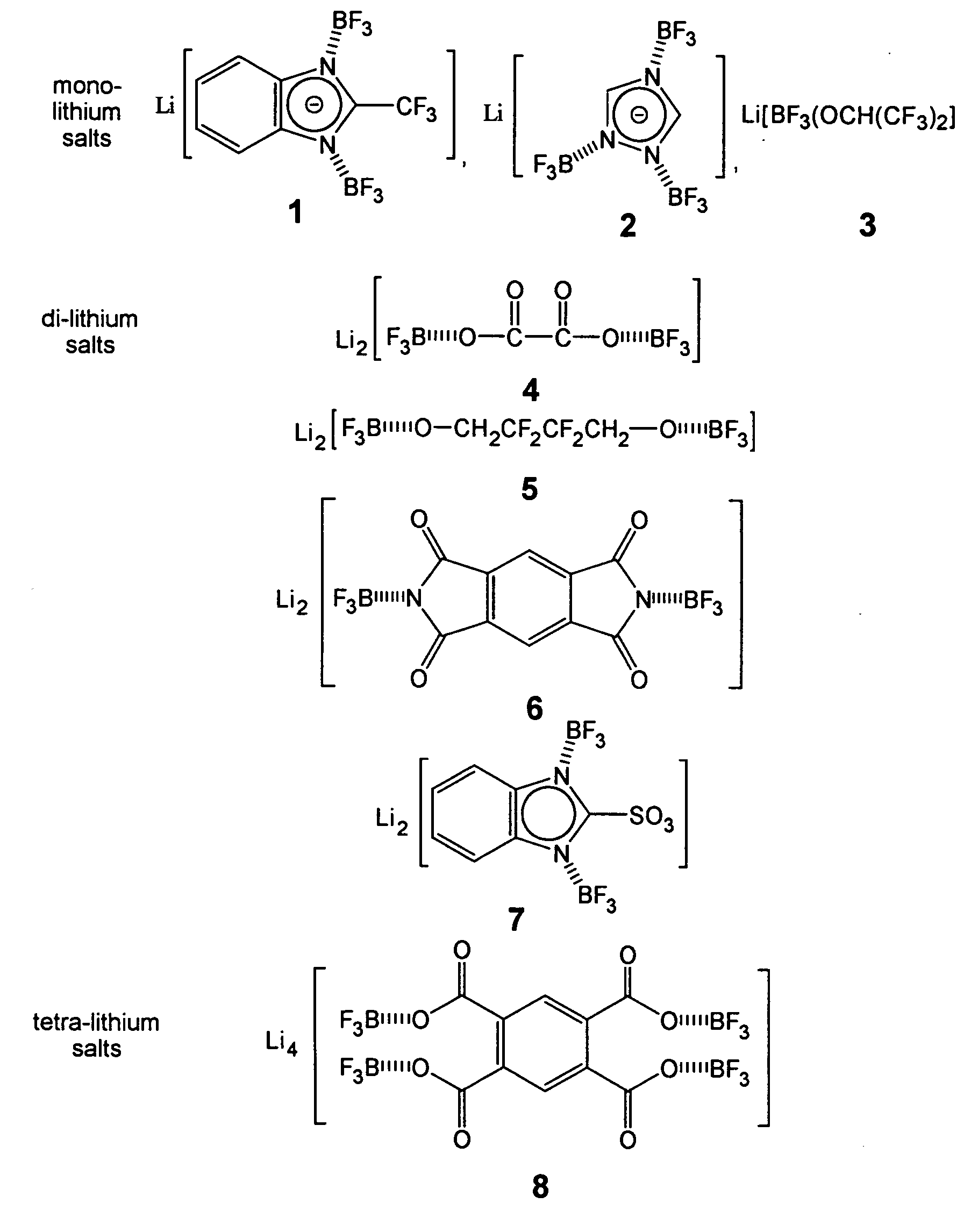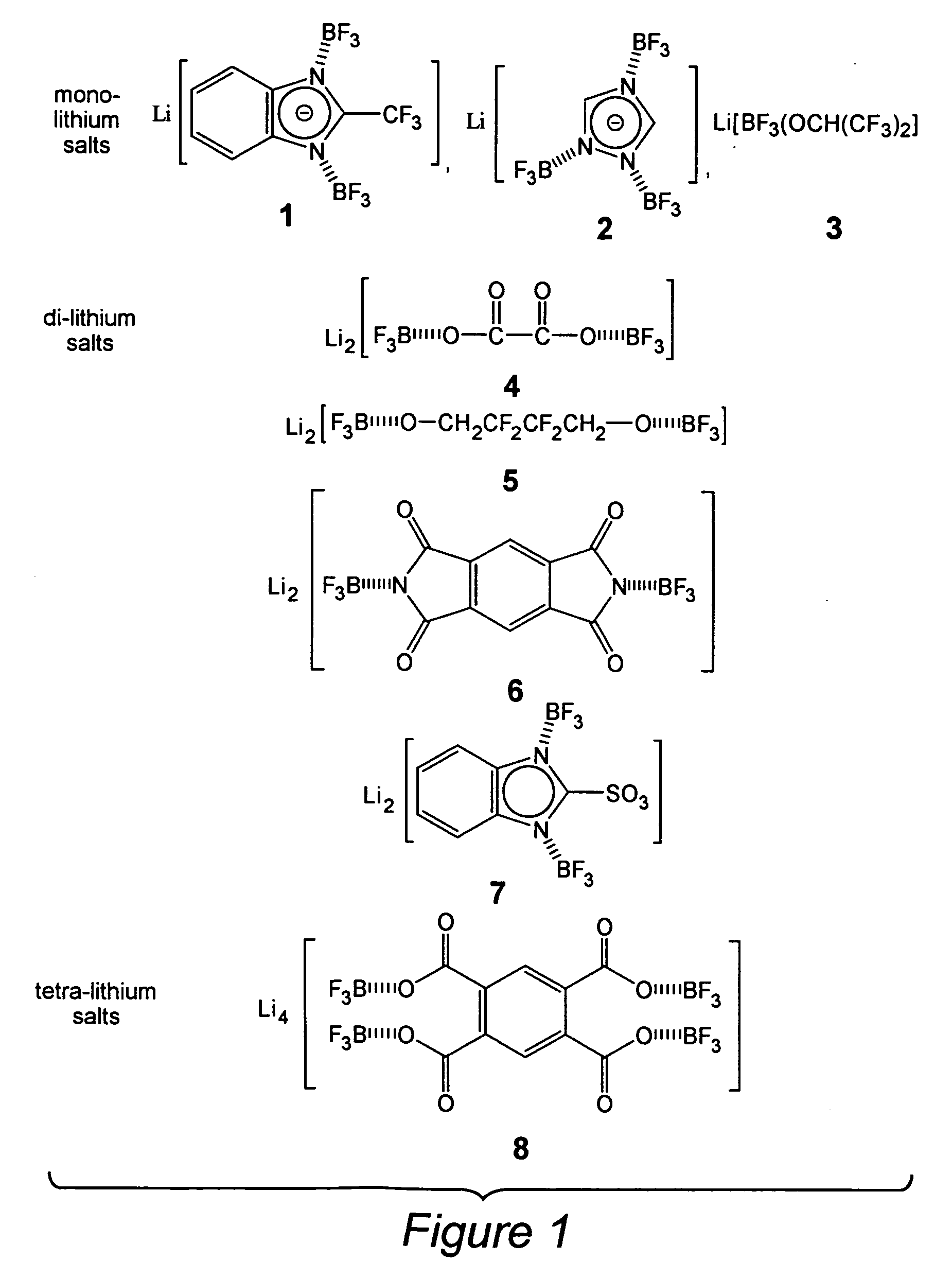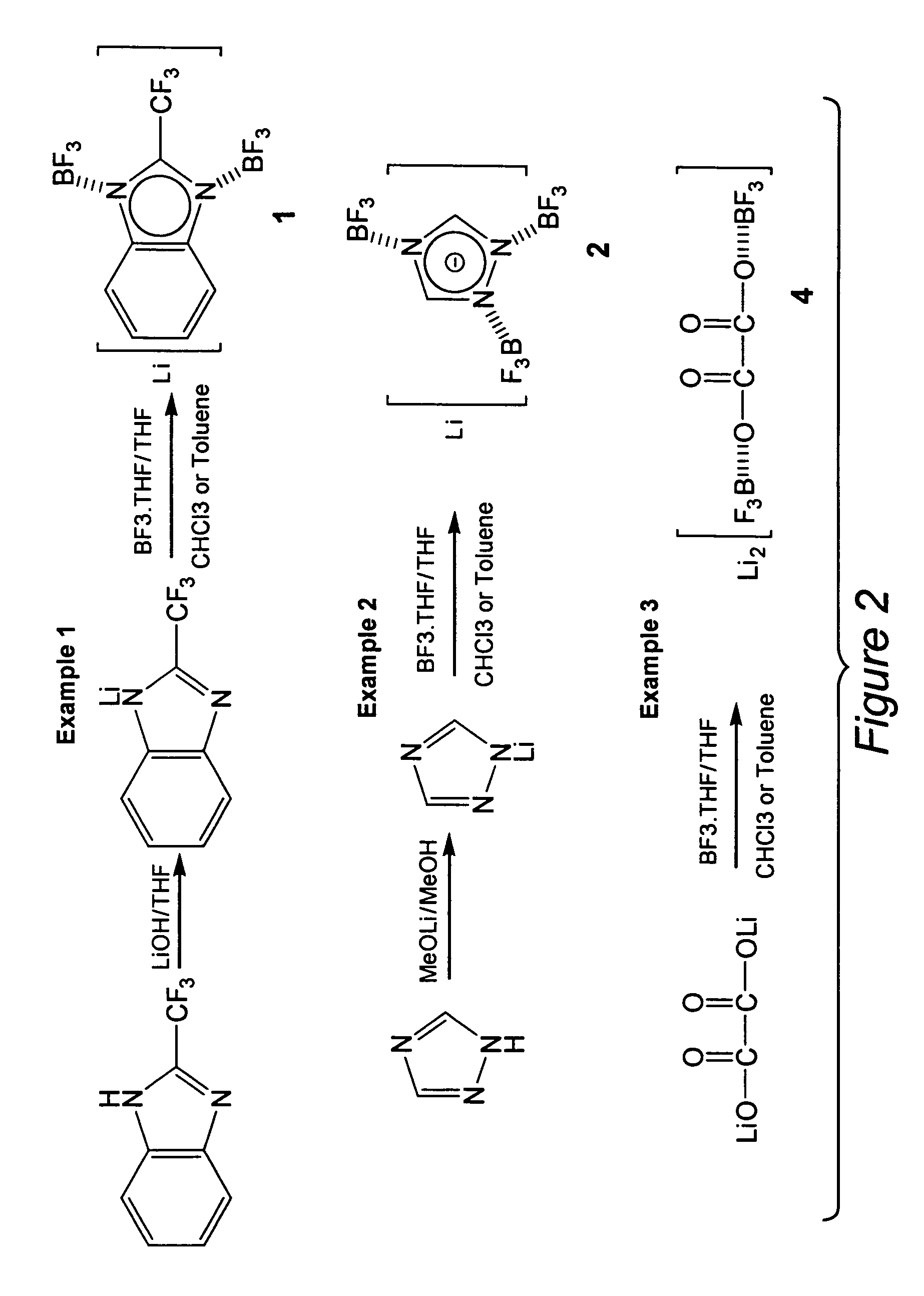Organic lithium salt electrolytes having enhanced safety for rechargeable batteries and methods of making the same
a lithium salt and rechargeable battery technology, applied in the field of organic lithium salt electrolytes, can solve the problems of non-aqueous electrolyte stability in the operational voltage range, so as to improve the safety of rechargeable batteries and improve the properties. , the effect of enhancing thermal stability
- Summary
- Abstract
- Description
- Claims
- Application Information
AI Technical Summary
Benefits of technology
Problems solved by technology
Method used
Image
Examples
example 1
[0028] 2-(trifluoromethyl)benzimidazole, 285.1 g of trifluoroacetic acid was added slowly using a micro-pump to 108.1 g of o-phenylenediamine with 30 minutes. The temperature of the mixture increased but can easily be controlled by adjusting the adding speed. After the addition was complete, the mixture was refluxed for about 4 hours following which it became a clear, dark solution. After cooling, the mixture was neutralized to pH=7˜8 with NaOH. The crystalline white precipitate was collected by filtration and re-crystallized in acetone. Total yield was 87.5%. The melting point: was determined to be 209-211° C. by DSC (ref. 208-211° C.).
[0029] Lithium 2-(trifluoromethyl)benzimidazolate, LiTFBI, 18.6 g (0.100 moles) of 2-(trifluoromethyl)benzi-midazole was dissolved in 50 mL THF to give a clear colorless solution. To the solution, 12 g of LiOH (0.5 moles) was added and the mixture was refluxed for 1 hours. The unreacted LiOH was removed by filtration and the lithium 2-(trifluoro-met...
example 2
[0031] Lithium 1,2,4-triazolate, LiTAZ, 6.9 g (0.100 moles) of 1,2,4-triazole was dissolved in 50 mL dry methanol resulting in a clear colorless solution. To the solution, 3.9 g of LiOMe (0.10 moles) was added and the mixture was refluxed and stirred for 1 hour. Lithium 1,2,4-triazolate, LiTAZ was obtained by removing the solvent, dried under vacuum at 60° C. for 15 hours. The yield was 98.0%. The DSC profile (25 to 300° C.) shows no unreacted 1,2,4-triazole moities.
[0032] Li[(BF3)3(TAZ)], 7.5 g (0.100 moles) of lithium 1,2,4-triazolate was added into a 50 mL THF solution containing 49 g (0.35 moles) of BF3.THF complex with stirring. The mixture was continuously stirred for 2 hours at room temperature of 50° C. and became a clear solution. Most of the THF solvent was thereafter removed from the solution and dichloromethane was added to precipitate out the product. The product was re-crystallized in DEC / dichloromethane and dried under vacuum at 60° C. for 15 hours. Overall yield was...
example 3
[0033] Li2[(BF3)2(Ox)], 10.1 g (0.100 moles) of lithium oxalate was added into a 50 mL THF solution containing 42 g (0.30 moles) of BF3.THF complex with stirring. The mixture was continuously stirred for 4 hours at room temperature of 50° C. and became a clear solution, from which most of the THF solvent is removed and dichloromethane was added to isolated the white solid product. The product was re-crystallized in DEC / dichloromethane and dried under vacuum at 60° C. for 15 hours. Overall yield is 85%. Melting point: 267° C. (dec).
PUM
| Property | Measurement | Unit |
|---|---|---|
| temperatures | aaaaa | aaaaa |
| melting point | aaaaa | aaaaa |
| temperature | aaaaa | aaaaa |
Abstract
Description
Claims
Application Information
 Login to View More
Login to View More - R&D
- Intellectual Property
- Life Sciences
- Materials
- Tech Scout
- Unparalleled Data Quality
- Higher Quality Content
- 60% Fewer Hallucinations
Browse by: Latest US Patents, China's latest patents, Technical Efficacy Thesaurus, Application Domain, Technology Topic, Popular Technical Reports.
© 2025 PatSnap. All rights reserved.Legal|Privacy policy|Modern Slavery Act Transparency Statement|Sitemap|About US| Contact US: help@patsnap.com



